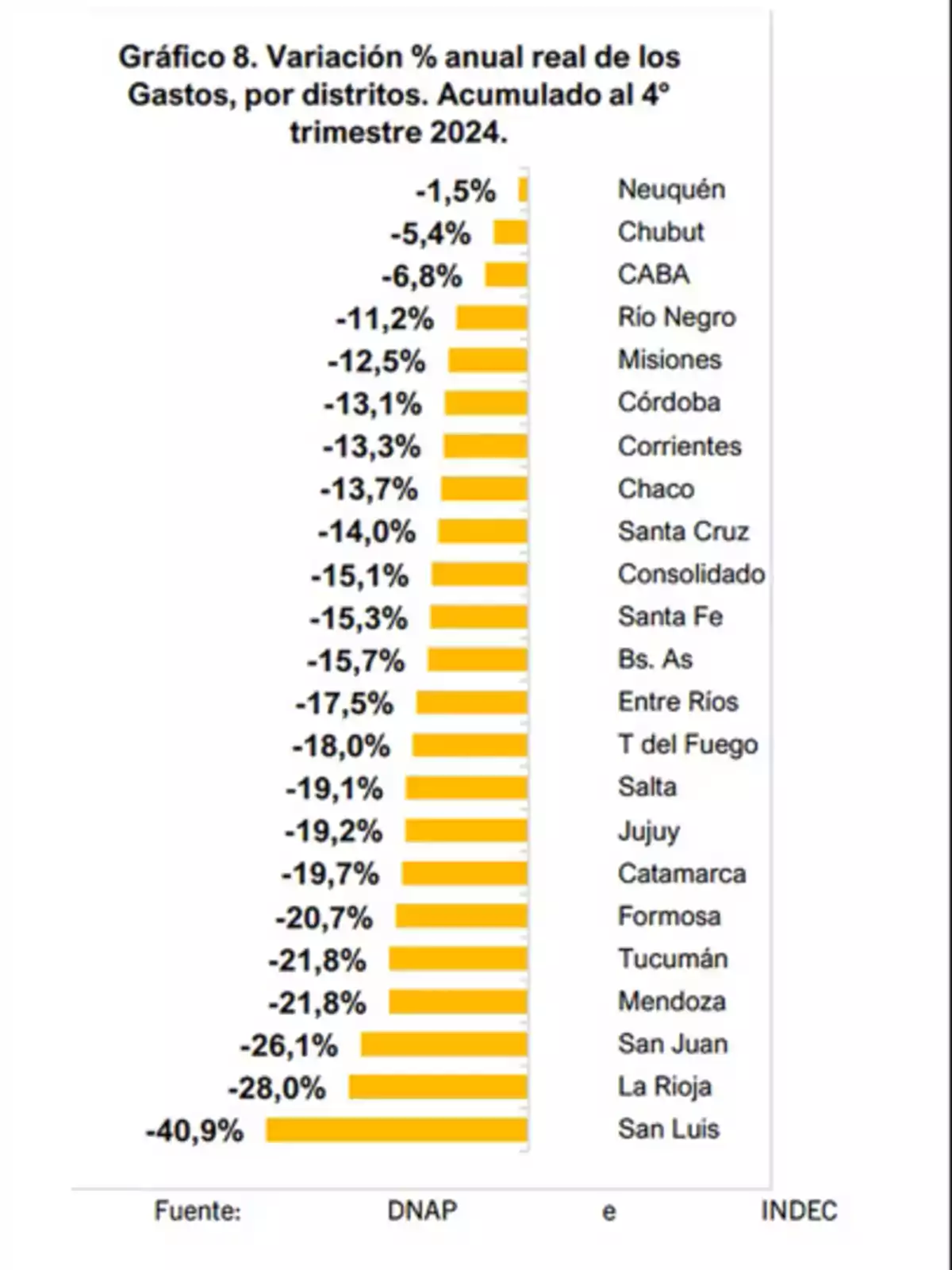
Milei Effect: The provinces successfully replicate the 'Chainsaw Plan' of fiscal adjustment
The provinces ended the year 2024 with a surplus of 0.1%, while in 2023 it had been a deficit of 0.3%
In a strong signal of the economic change that Argentina is undergoing, the provinces made a U-turn in their public accounts: they closed the year 2024 with a financial surplus after years of chronic deficit. Inspired by the ambitious adjustment plan of Javier Milei's government, the subnational jurisdictions applied their own version of the "chainsaw" and achieved, together, a surplus of 0.1% of the Gross Domestic Product, after having ended 2023 with a deficit of 0.3%.
This shift was confirmed by two technical reports prepared by the Argentine Institute of Fiscal Analysis (IARAF) and Politikón Chaco. According to the survey by IARAF—which includes data from 22 jurisdictions—the provincial primary result reached $2.3 trillion, while the financial result was surplus at $767 billion. To illustrate the impact: in 2023, that same financial result was deficit at $611 billion.
Excluding La Pampa and Santiago del Estero, due to lack of complete data, the primary result went from 0.1% to 0.4% of GDP, and the financial from -0.3% to +0.1%. The report from Politikón Chaco agreed with this diagnosis and showed that, as a percentage of total income, the consolidated primary surplus was 2.6% (against 0.5% in 2023), and the financial was 0.9%, reversing a deficit of 1.6%.

This fiscal improvement was the result of order and austerity. Indeed, the provinces suffered a real annual drop of 12.7% in their total income. Current transfers from the national government plummeted 65.7%, while national-origin taxes fell 8.4% and provincial taxes 7.4%. Only non-tax revenues showed a slight rebound (+4.7%), driven by royalties (+7.4%).
Faced with this decline, the jurisdictions opted for a firm adjustment: total consolidated spending fell 15.1% in real terms, equivalent to $15.4 trillion at constant 2024 prices. According to Politikón, 43% of the adjustment was concentrated in personnel spending, 21% in transfers, and 16% in direct real investment. Personnel spending decreased 15%, debt interest 30%, social security benefits 11.6%, and current transfers 10.8%. Capital spending was reduced even more: 32.6%.
San Luis (-40.9%), La Rioja (-28%), and Mendoza (-21.8%) led the podium of the deepest cuts. On the opposite end, Neuquén (-1.5%), Chubut (-5.4%), and CABA (-6.8%) applied the most moderate adjustments. Neuquén was, in fact, the only province that managed to improve its income in real terms (+6.4%), thanks to the boost from Vaca Muerta.
In fiscal terms, 19 provinces ended with a primary surplus. Jujuy (15.2%), San Luis (13.7%), and San Juan (13.7%) led the ranking. Only three jurisdictions closed with a primary deficit: Catamarca (-2.1%), Buenos Aires (-2.9%), and Chaco (-5.2%). Regarding the financial result, six provinces still showed imbalance, with Chaco (-7.6%) and Buenos Aires (-5.8%) being the most affected.

The fiscal order was also achieved with a strong role from the largest provinces: Buenos Aires, Córdoba, Santa Fe, CABA, and Mendoza accounted for 62% of the income loss and 56% of the total adjustment.
But the path doesn't end there. The International Monetary Fund—which praised the fiscal effort—doubled down and demanded progress in a tax reform that eliminates "distortive taxes". In the fine print of the agreement signed with Argentina, the IMF stated that "the Argentine tax system remains excessively complex and distortive, with an overall burden that hinders growth and competitiveness."
In particular, the organization's technicians highlighted that "the reliance on distortive taxes is especially high", mentioning among the most problematic the export tax, the levy on financial transactions, and especially, Gross Income. The latter, they noted, "doesn't allow the deduction of taxes paid in previous stages" and "negatively affects external competitiveness, financial deepening, and the total cost of doing business."
The IMF was clear: "Distortive provincial taxes must be gradually eliminated, and greater emphasis should be placed on improving the valuation of real estate and land assets." It even proposed a redesign of taxation on energy and mining resources, in line with the Incentive Regime for Large Investments (RIGI) promoted by Milei's administration.
More posts: